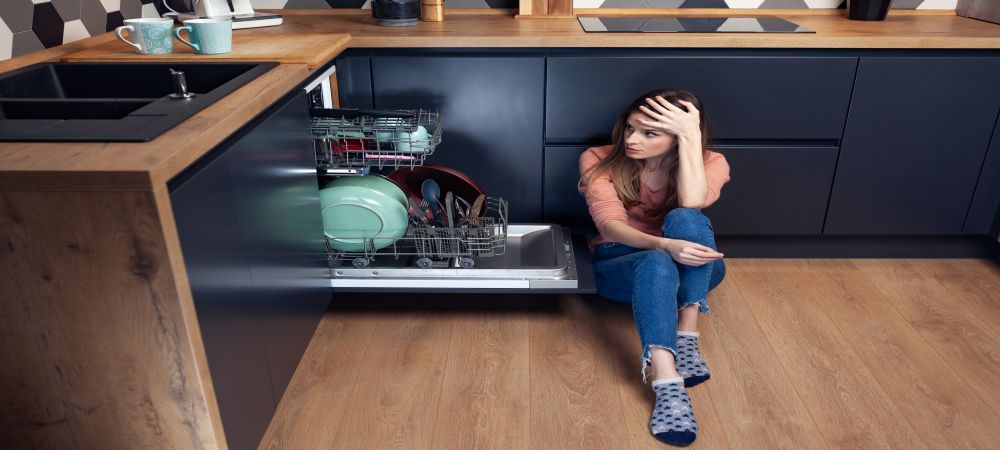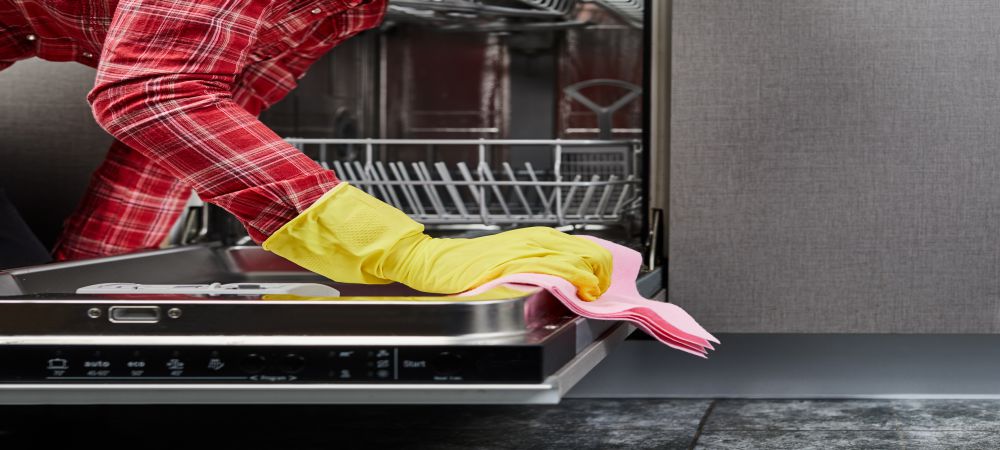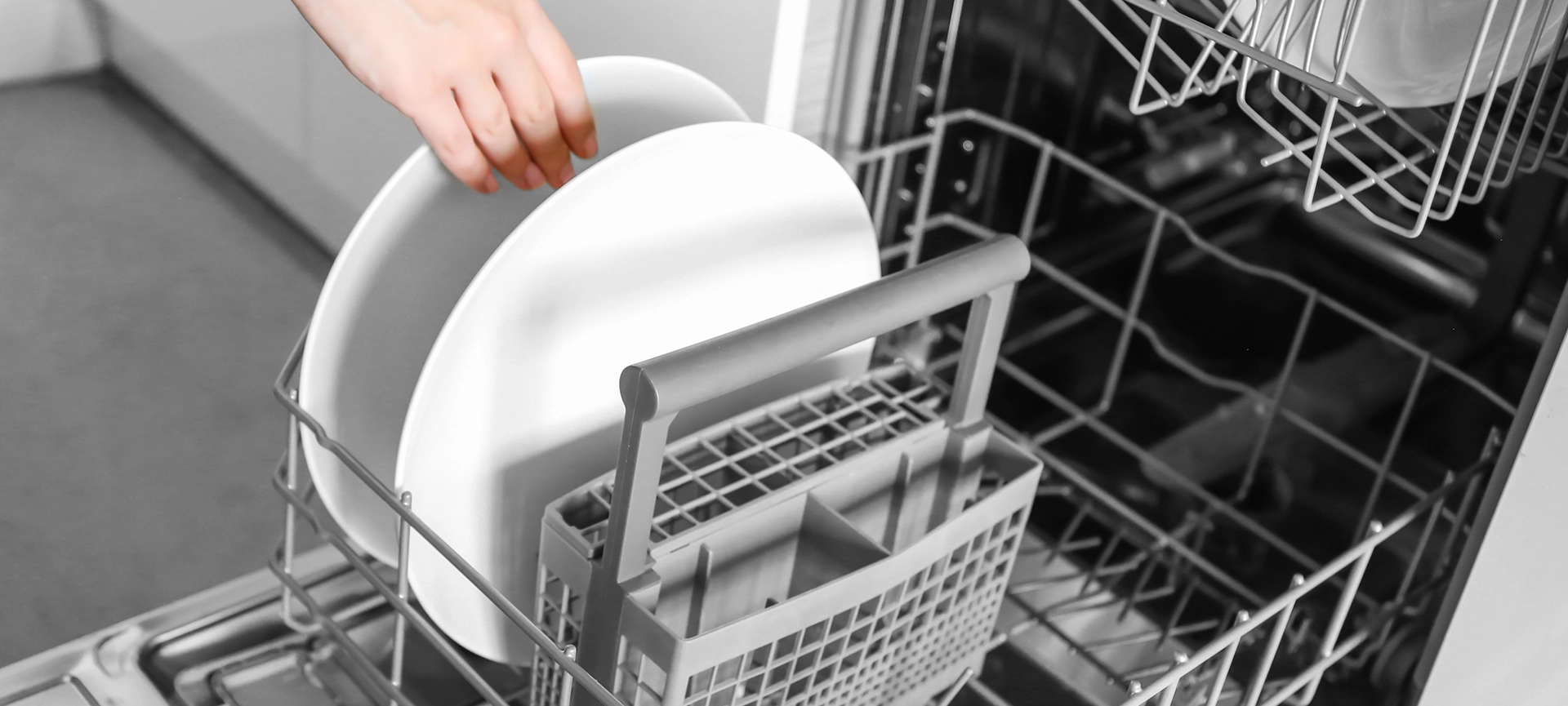Nothing can be more frustrating than opening the dishwasher – and getting a whiff of a weird, unpleasant odour. In some cases, in fact, the stench can be so intense that it will permeate the kitchen, even when the dishwasher door is closed shut. To make matters worse, the dishes, despite looking sparkling clean, may also retain that rancid smell.
It may sound frustrating, but there is an easy fix. You probably won’t even need to call an appliance repair service. In this article, we give you a detailed step-by-step guide on how to clean a dishwasher.
A Guide on How to Clean a Smelly Dishwasher
A dishwasher is among the many ingenious creations of the human mind. As the name indicates, it is a machine designed for cleaning and washing the dishes automatically. This, in turn, makes your daily lives infinitely easier and more convenient. Essentially, it works by spraying a mix of hot water and detergent at the soiled dishware and cutlery, loosening and removing the food debris.
Over time, the food particles may accumulate in the dishwasher, eventually generating a foul smell. The stench may be more putrid if the scraps are primarily composed of fish, eggs, cheese, and other strong-smelling foods.
Aside from this, another possible culprit is stagnant recycled water that has been left to sit for too long. Often, it occurs when you have been away for some time, leaving the dishwasher door closed for extended periods. Eventually, it can cause the formation of moulds, which are associated with strong, unpleasant smells.
Either way, the solution is simple. All you have to do is give your smelly dishwasher a deep, thorough cleansing. Here are some effective cleaning tips to help you get started.
Step 1: Empty the Dishwasher
Before anything else, clear out the contents of the dishwasher first, including the dishes and utensils.
Step 2: Remove and Clean the Drain Filter
The dishwasher filter is meant to prevent the small, soggy food litters from getting into your freshly-cleaned dishes and clogging the drain. Some filters automatically clean themselves, while the ones in more recent dishwasher models typically require manual cleaning. With that said, a dirty dishwasher drain filter is perhaps the most common cause of foul dishwasher odours.
Directions:
- Remove the dishwasher filter from the bottom of your kitchen appliance.
- Wash the filter in the sink using a mixture of hot water and detergent soap. For best results, use a bottle brush to access every nook and cranny. Be patient during this step. You want to make sure that the filter is completely devoid of food gunk.
- Dampen a sponge with water, then use it to clear away the food particles.
Step 3: Clean the Spray Arm
The rotating spray arms are responsible for blasting the dirty dishes with the cleaning mixture. With repeated use, the arms can become clogged with food. Aside from significantly reducing its cleansing ability, the presence of the food debris can also contribute to the dishwasher’s nasty smells.
Directions:
- Remove the spray arms. Some dishwasher models only have a single arm located on the bottom of the appliance, while others may have both upper and lower spray arms.
- Bring the spray arms over the kitchen sink. Use a cotton swab or a small bottlebrush to dislodge and remove any stray food particles.
- Place one of the spray arms under running water, ensuring that all the holes are clear and free from debris.
- Repeated step 3 with the other spray arm.
Step 4: Wipe the Inside of the Dishwasher
After some time, muck and grime may accumulate on the inside walls of the dishwasher. As might be expected, this unwanted buildup can result in that fetid odour. Wiping down the inside of your appliance can go a long way in removing that stench.
Directions:
- Carefully remove the top and bottom racks of your dishwasher.
- Bring the racks to the kitchen sink and wash them with warm water.
- Dampen a microfiber cleaning cloth or sponge with hot soapy water. Use it to scrub the interior of the dishwasher.
- Don’t forget the door gasket – or the elastic strip that creates a tight seal around the door. If left ignored, it can encourage the growth of mould and mildew over time.
Related Article: Dishwasher Leaking: Top 7 Causes and How to Fix
Step 5: Grab Some Vinegar and Baking Soda
White vinegar and baking soda are staples in every home and can be used in a variety of ways. For instance, they are effective odour neutralizers. With that said, feel free to use both of them to clean your dishwasher and eliminate any residual smell. However, make sure not to use them at the same time. What you want to do is start with a cup of vinegar, then follow it up with a cup of baking soda.
Directions:
- Fill a bowl with one cup of white vinegar. Position it on the top rack of the dishwasher.
- Run the dishwasher using the hottest setting available. Vinegar contains acetic acid, which will absorb the stench and break down the lingering dregs on the interior walls. This will leave your appliance smelling fresh and clean.
- Once the wash cycle is complete, remove the bowl from the top rack.
- Ready a cup of baking soda. Sprinkle the powder on the bottom of the dishwasher.
- Run the dishwasher on a short wash cycle. Again, stick to the hottest setting so that every bit of the baking soda will dissolve.
- Repeat this procedure every few months to prevent the stench from forming in the first place.
Step 6: Check the Dishwasher Drain Hose
After the previous step, your dishwasher should finally be free from noxious smell. If it remains odorous, there might be something wrong with the drain hose. This rings especially true if you notice some standing water in the dishwasher after you run each cycle.
Directions:
- Check the dishwasher drain hose at the back of the appliance. Keep an eye out for any deformations, such as appearing bent or restricted. This can interfere with the flow and cause the water to pool at the bottom of the dishwasher.
- Does the wastewater appear to be backing up into the dishwasher? If so, consider lifting the drain hose loop a bit higher.
If your dishwasher is still not draining properly, you might be dealing with some serious clogging. It can occur if food particles get stuck in the drainpipe or accumulate in the garbage disposal. In this case, you might want to try letting the water run for more than 10 seconds after the food is gone. This can help dislodge any remaining food particles in the drainpipe.
Related Article: Dishwasher Not Draining: Causes and How to Fix
Get Rid of Dishwasher Smell Successfully
A dishwasher is a mainstay in every home. By using this nifty kitchen appliance, you can save precious time and effort when it comes to cleaning the dishes. But to remain functional and in tip-top shape, you will need to clean it regularly. Otherwise, it may not be able to wash and clean your dishes properly or may emit nauseating smells.
Fortunately, cleaning your dishwasher is pretty straightforward, although it can be labour-intensive. After following the steps listed above, your beloved appliance should effectively clean the dishes without imparting an unwanted stench.
However, if your dishwasher has malfunctioned, leaving you with plates that remain dirty and smelly after a cleaning cycle, the problem might be more than just poor maintenance. In this case, you should let a repair service or company handle the problem. Contact Prime Appliance Repairs today, and we will diagnose and resolve the problem for you.








